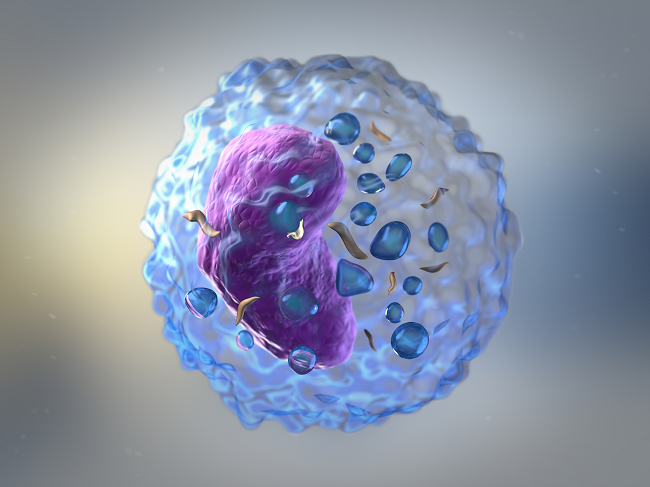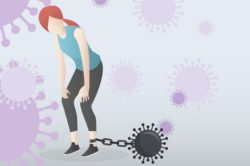In partnership with his colleagues, the Italian doctor Antonio Costantini pioneered the use of high-dose thiamine for treating a range of neurological and inflammatory conditions, including Parkinson’s disease (and here), multiple sclerosis, fibromyalgia, inflammatory bowel disease, and chronic cluster headaches.
Sadly, in 2020, Dr. Costantini contracted COVID-19 and died. While his work is finished, his legacy of exploring the therapeutic benefits of high-dose thiamine endures. In the past year, several important studies on high-dose thiamine have been released. This review briefly describes two of these studies and several related resources.
High-Dose Thiamine for IBD Fatigue
In the January 2021 issue of Alimentary Pharmacology & Therapeutics, Palle Bager and colleagues published a randomized controlled trial examining whether oral high-dose thiamine helped relieve fatigue in patients with quiescent inflammatory bowel disease (IBD) and severe chronic fatigue. Following a regimen adapted from Costantini’s earlier pilot study and other Costantini studies, the patients in Bager’s trial received 600 to 1,800 mg of oral thiamine hydrochloride daily, based on weight and gender. The 40 patients in the study were randomized to either receive high-dose thiamine or a placebo for four weeks. Following a four-week washout period, the control and treatment groups switched for another four weeks of treatment/placebo, so that everyone in the study received both high-dose thiamine and a placebo. The trial found that high-dose thiamine produced large reductions in self-reported fatigue on the validated IBD fatigue scale that were both clinically and statistically significant. No statistically significant relationship was observed between the impact of high-dose thiamine and patients’ baseline thiamine deficiency status.
This study is significant for its use of a very rigorous evaluation method: a double-blind cross-over randomized controlled trial. Using this gold standard evaluation method, Bager and colleagues largely confirmed the findings of Costantini’s earlier pilot study. While the Bager study focused only on people with IBD, it provides reason to be optimistic that high-dose thiamine may be helpful for the other populations studied by Costantini and possibly for people with other neurological and inflammatory conditions.
Bager and colleagues suggest that the impact of thiamine in reducing fatigue among patients with IBD and chronic fatigue may be related to problems the patients experience with the active transport mechanism for thiamine:
While the effect of high-dose oral thiamine was highly significant in our study, its exact mechanisms still need to be explored and investigated. The theory of a dysfunction in thiamine transport from blood to mitochondria remains a plausible explanation. The participants in our study were exposed to high doses of thiamine which induces passive diffusion that will add thiamine to the cells and the mitochondria. Consequently, the carbohydrate metabolism can normalise, and a reduction of fatigue is likely to follow.
In a Letter to the Editor of Alimentary Pharmacology & Therapeutics, I urged consideration of an alternative hypothesis, grounded in thiamine’s property as a carbonic anhydrase inhibitor:
The inhibition of carbonic anhydrase isoenzymes by high-dose thiamine and the resulting production of carbon dioxide could lead to reductions in fatigue and other symptomatic improvement through one or more of four potential pathways: (a) by reducing intracranial hypertension and/or ventral brainstem compression; (b) by increasing blood flow to the brain; (c) by facilitating aerobic cellular respiration and lactate clearance through the Bohr effect; or (d) by dampening the pro-inflammatory Th-17 pathway, again through the Bohr effect, potentially mediated by reductions in hypoxia-inducible factor 1.
More background on my hypotheses on the potential mechanisms for the impact of high-dose thiamine, with full citations, may be found here. The authors’ thoughtful reply to my letter may be found here.
High-Dose Thiamine for COVID-19
Another important recent study on high-dose thiamine has been released on a preprint server and is currently under consideration at the journal Critical Care. The study found that administration of high-dose thiamine to 83 patients in Saudi Arabia who were critically ill with COVID-19 was associated with a 55% reduction in 30-day ICU mortality and a 51% reduction in in-hospital mortality, as well as a reduction of 81% in the incidence of thrombosis during their ICU stay. The patients received a median of 100 mg of thiamine (presumably intravenously) for a median of 7 days.
Unlike the Bager study, the COVID-19 study by Al Sulaiman and colleagues was a retrospective study using a case matching approach, rather than a prospective study using random assignment. The authors matched the patients treated with high-dose thiamine to other critically ill COVID-19 patients using propensity scores based on baseline characteristics and controlling for the use of systemic corticosteroids. Based on correspondence with the authors, I understand that the patients’ baseline thiamine levels were not measured and thus unavailable as a matching variable.
This study is significant for providing evidence of the potential of high-dose thiamine to help treat critically ill patients with COVID-19. As I noted in an earlier Hormones Matter blog post, a prior study had found that high-dose thiamine damped down the pro-inflammatory th-17 pathway associated with the COVID-19 cytokine storm, but that study did not involve the treatment of actual COVID-19 patients. Outcome data from the Front Line COVID-19 Critical Care Alliance suggests that the combined use of Methylprednisolone, Ascorbic Acid (Vitamin C), Thiamine and Heparin (the so-called MATH+ protocol) may be helpful for COVID-19, but those data do not isolate the impact of high-dose thiamine and do not compare outcomes for treated households to those of a comparison group.
A randomized controlled trial is needed to verify the results found by Al Sulaiman and colleagues and assess whether high-dose thiamine can reduce mortality from COVID-19 among critically ill patients. It would also be valuable to rigorously evaluate whether oral high-dose thiamine could help early stage COVID-19 outpatients avoid hospitalization by reducing the incidence of the COVID-19 cytokine storm. This could help reduce the burdens of hospitals in India, Brazil, and other countries with high COVID-19 caseloads.
Future Directions
I am hopeful that additional rigorous research will be conducted to assess the potential of high-dose thiamine to treat a range of neurological and inflammatory conditions. It is hard to imagine a better tribute to Costantini’s work than a series of additional randomized controlled trials evaluating whether the observations he made in his pilot and case studies hold up when tested with larger samples using rigorous methods.
In addition to the conditions studied by Costantini, I would also encourage research into whether high-dose thiamine could be helpful for people with myalgic encephalomyelitis / chronic fatigue syndrome (ME/CFS) and the neurological complications of Ehlers-Danlos Syndrome (EDS) (such as those experienced by my daughter). In this Medium post (more technical discussion) and Health Rising post (less technical discussion), I explain why I think these populations could benefit from high-dose thiamine.
More recently, I documented the retrospective self-reported outcomes for 55 individuals with ME/CFS, EDS or Fibromyalgia who reported taking 200 mg of more daily of high-dose thiamine. Nearly two-thirds of the participants in this retrospective survey reported large benefits, most commonly in reducing fatigue, post-exertional malaise, and brain fog. Interestingly, benefits were reported across a range of doses, including doses below those used by Costantini and Bager. Several study participants described high-dose thiamine as a game-changer that brought them substantial relief. The study has many limitations. For example, it was a small non-representative sample and based on self-reports only, but it is consistent with the potential of high-dose thiamine to provide large therapeutic benefits. I am hopeful it will help make the case for conducting more rigorous research in the future.
To the extent that Long COVID is similar to ME/CFS, I would also encourage the study of high-dose thiamine for people with this debilitating condition.
We Need Your Help
More people than ever are reading Hormones Matter, a testament to the need for independent voices in health and medicine. We are not funded and accept limited advertising. Unlike many health sites, we don’t force you to purchase a subscription. We believe health information should be open to all. If you read Hormones Matter, like it, please help support it. Contribute now.
Yes, I would like to support Hormones Matter.
This article was published originally on June 10, 2021.














In my opinion, the whole method of diagnosis must be changed, and related to the conversion rate of glucose, fats, and proteins to ATP, in relation to muscle mass, and muscle groups.
Rapid depletion of high phosphorus molecules from the cells must be avoided (AMP deaminase activation must be avoided, and AMP kinase activated instead) uric acid must be belonging 5.5 in males, otherwise metabolic syndrome and insulin resistance occurs, and insulin is only good for bringing glucose into cells, but bad for everything else (independent growth factor )
The final prove must be measurable in improvement of maximum muscle strength/glycolysis, and how long creatine phosphate can reconverse ADP to ATP (not possible with insulin resistance, uric acid above 5.5mg/dl) on one hand,
a n d improvement of endurance (Watts per kg bodyweight at 1.5mMol lactate = eco-modus)
Testing endurance /Watts only by max. output in the red zone of 7 or more lactate is not sufficient, to prove cardiovascular health.
There should be a competition between doctors:
Those who can raise the energy conversion in relation to muscle mass the most, at affordable coasts should win the annual competition .
1. Is the building of cellular energy optimal, and if not, at which position(s) in the Krebs cycle is what deficient?
1.1 Is it hypoxia, and is the reason in the lungs?
1.1.2 quality of the red blood cells ? (2,3 DPG is rarely checked)
1.1.3 Is the problem vascular disfunction?
1.1.4 Is myoglobin the problem?
1.2 Is the problem pseudo-hypoxia and where exactly is the problem/greatest potential of improvement?
Below everything must be the question: Will what I eat be digested well, and get into the cells?
Great article, Jeffrey. Many thanks. ?
Thiamine has changed my life. I spend less time in bed now. The only side effect i’ve experienced is change in body odor. It’s really annoying. Any advice? (I take all the cofactors).
It’s amazing how Vitamin B1 can halt/slow down symptoms of Parkinson’s. Unfortunately main stream medicine does not approve of this. Claiming there is not enough evidence. I am afraid to say this is all political. Pharmaceutical companies will go broke if Vitamin B1 is considered as the Golden solution.
Hi Jeff – thanks for your posts. Do we know why bodies keep their blood at any given amount of CO2? Does stress, for example, cause an increase in carbonic anhydrase that we are working to correct? I wonder if we otherwise reduce our production of CA in the kidneys? I did find an article stating that adrenaline sensitizes the carotid body to ph/CO2. Perhaps we can go upstream in the system to get similar results with less thiamine?
https://www.ncbi.nlm.nih.gov/pmc/articles/PMC4967760/
This paper seems to suggest that dopamine and Gaba reduce sensitivity
https://www.ncbi.nlm.nih.gov/pmc/articles/PMC5864924/
Together they suggest the vital role of the CNS. I’d love your thoughts.
How would a person determine if a high thiamine protocol could be of value for a person who has Wernicke-Korsakoff Syndrome? My brother experienced no thiamine and completely lost his memory and suffers greatly with confusion and anxiety/panic episodes. I’m hearing in the WKS community that a high dose of thiamine is extremely effective in alleviating WKS symptoms. Thanks for any available information!
Since WKS results from a deficiency of thiamine, high-dose thiamine is the standard treatment for all people diagnosed with WKS. In acute cases, it is often administered intravenously for a period of time followed by oral thiamine. More info here: https://rarediseases.org/rare-diseases/wernicke-korsakoff-syndrome/
I have hEDS and have just started a high dose thiamine protocol. Thank you for sharing the protocol you have used with your daughter.
There is a Japanese study from 1974 that discusses the link between thiamine and the formation of collagen though it is unavailable on the Internet. I have only found its title – not even the abstract online.
I was so ill with POTS and weakness following the birth of my daughter that I would lose the ability to control my arms and legs or to speak or communicate. I was unable to hold my head up (cervical instability) especially after “attacks” whereby I would be unable to move or speak. I was unable to be moved even in a wheelchair due to dizziness. I had severe headaches. I had pelvic organ prolapse and chronic joint pain. I was a mess.
I managed to work out my whole body was chronically hypoxic despite adequate blood oxygen following hospaural admissions whereby I was told I was clinically fine. The neuropathies associated with EDS I also believe are due to this hypoxia which is caused by the metabolic disorder.
At my tilt table test I had 5 “attacks” and was short of breath and felt totally unable to breathe in. I realised I had low blood co2.
Sodium bicarbonate in some water cured it all. In a few hours.
I believe thiamine/transportation issues cause long term chronic metabolic dysfunction at the cellular level and chronic lactic acidosis. For me it was not caused by medication.
I think the thiamine therapy takes time to reverse the lactic acidosis. MCAS and mast cell degranulation also occurs when tissues are hypoxic.
I think that potentially all types of EDS are caused by genetic insufficiencies that impact the bodies ability to metabolise carbohydrate causing cellular hypoxia that causes multiple issues.
I was particularly struck by the way in which my “cervical instability” reversed miraculously on imbibing the sodium bicarbonate. It has to be blood acid related… not necessarily structural. I believe that the structural abnormalities are an effect of the metabolic issues not the cause.
If you are interested I too am researching root causes and treatments for EDS outside of the scope of regular medicine.
I am based in London, UK.
Natalie
Thanks for the note Natalie. I hope the high-dose thiamine proves helpful. If you have not already, I’d suggest exploring the link between sodium bicarbonate and intracranial hypertension. Craniocervical instability can lead to ventral brainstem compression and intracranial hypertension and sodium bicarbonate is known to reduce intracranial pressure, so this may be one possible explanation for the benefits. To the extent high-dose thiamine is a carbonic anhydrase inhibitor, as predicted by in vitro studies, it should similarly reduce intracranial pressure and hopefully provide some relief.
Natalie, I should have added that I think your points about chronic hypoxia are well taken. I am not sure about what the root issue is: the stuctural abnormalities or the metabolic problems — I suspect they reinforce each other, with MCAS generating joint laxity, which leads to cervical instability, which leads to ventral brainstem compression, which leads to MCAS, etc. Your last sentence suggests an interest in following up to discuss more. If so, feel free to send me a note. My email can be found in my Alimentary Pharmacology letter to the editor.
I only just saw these!
Interestingly when I first took the sodium bicarbonate it gave me headaches/migraine and pretty bad ones at that so I had to reduce the amount. The high dose thiamine (I am now able to get it in a HCL shot) also creates the same effect which I mitigate with potassium chloride after watching Elliot overton’s YouTube video about “side effects” of high dose thiamine.
I notice that I am able to breathe much more deeply, easily and steadily when I take the bicarbonate so I wonder if the intercranial hypertension impacts the receptors in the brain related to co2/breathing or whether it is just blood co2 increasing impacting? I don’t notice such an acute difference with the thiamine but I will check after my next dose when it is more acute.
I think a lot of the issues for EDS are related to chronic lactic acidosis caused by a long-term functional thiamine deficiency. It is a bit of a chicken and egg relationship as you say so it is difficult to pinpoint causation as everything is so interrelated.
I think nitric oxide may also be implicated as per a book I found connecting cellular hypoxia and CFS/ME.
I believe blood acid testing is the way forward and many symptoms and swings evidence of the body trying to bring them into balance! If Intracranial hypertension is related to blood acid balance then it fits also.
I am wondering if a sodium bicarbonate IV may be useful as a short term fast acting treatment though I believe high dose thiamine HCL is now understood to be a great therapy for lactic acidosis. Intuitively and after my rapid recovery with sodium bicarbonate I feel short term alkalising agents may help until the balance Can be restored.
I have had amazing results the thiamine HCL shot. My potassium tanked which was interesting and I think must be related again to the blood acid shift.
Thanks for sharing your experience! Potassium deficiency is a known side effect of carbonic anhydrase inhibitors, especially if patients are also taking other supplements or medications with diuretic properties. If high-dose thiamine is a carbonic anhydrase inhibitor, as predicted by an in vitro study, monitoring for and correcting potassium deficiency would be important.
Hello Natalie- is there a way to get in contact with you? I am a physician that has seen dramatic results with high dose Thiamine but has also seen symptoms similar to yours likely related to acid/base balance. I would be grateful to connect with you and learn more. Thank you.
Very interesting, thank you.
There is a therapy with co2 gas applied over the skin, to increase blood-flow
Without oxphos no co2, and no water/sweating, and lower temperature despite normal thyroid function.
Yesterday I was hiking on the same mountain than last year. 2hours 10, instead 3 hours.
With around 800mg Thiamine HCL and Benfothiamin ALA and High dose of the other B-vitamins and Magnesium. And less lactate.
HRV measure is soon… I hope the autonomic nerve system function has improved too.
Thanks for the report! Glad to hear of the improvements. I will look into the Co2 therapy you mention.
This is fascinating, there is a medication called Mildronate (Meldonium) developed from the amino acid Carnitine, it’s used in similar conditions, but mainly for anti-ischemic conditions. This new research on thiamine will hopefully go further, there is some good info here: https://www.ncbi.nlm.nih.gov/pmc/articles/PMC6741751/ I have some suspicions it might be related to the extremely low deaths in Belarus, probably an accidental discovery, if it has been.